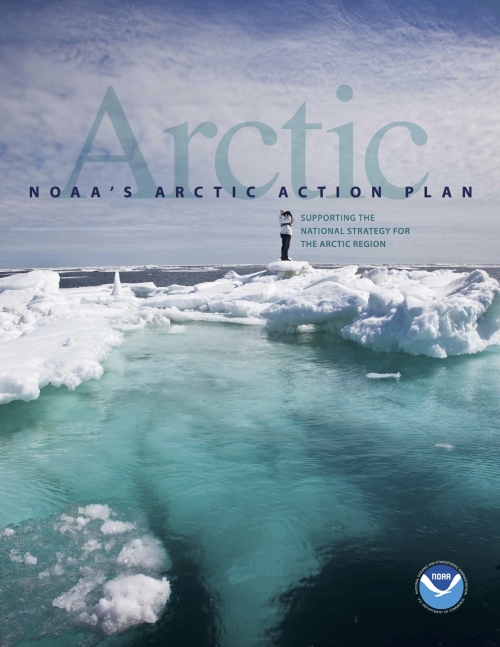
The National Oceanic and Atmospheric Administration (NOAA) launched its Arctic Action Plan in April 2014.
This plan provides an overview of NOAA's Arctic programs and describes how they implement NOAA's Arctic Vision and Strategy and the agency's roll in implementing the National Strategy for the Arctic Region.
NOAA's Arctic Action Plan targets six strategic goals identified in the Arctic Vision and Strategy. These goals advance NOAA's agency priorities of advancing U.S. security interests, enhancing Arctic region stewardship, and strengthening international cooperation. The strategic goals are to:
- Forecast sea ice.
- Strengthen foundational science to understand and detect Arctic climate and ecosystem changes.
- Improve weather and water forecasts and warnings.
- Enhance international and national partnerships.
- Improve stewardship and management of ocean and coastal resources in the Arctic.
- Advance resilient and healthy Arctic communities and economies.
The plan describes linkages to other agency and interagency plans including the National Ocean Policy and the Interagency Arctic Research Policy Committee (IARPC) Five-Year Research Plan. It also identifies specific actions that NOAA will take in the next two years to support Arctic-related missions and mandates and to further scientific understanding of the Arctic region, which includes the Arctic Ocean and the Beaufort, Bering, and Chukchi Seas as well as the terrestrial portions of northern and western Alaska.
For more information about the National Strategy for the Arctic Region, see: "White House Announces National Strategy for the Arctic Region" in Witness the Arctic - Spring 2013).
For more information about the NOAA Arctic Vision and Strategy, see: "NOAA Releases Final Arctic Vision and Strategy" in Witness the Arctic - Spring 2011.
NOAA's Arctic Action Plan is available here. A fact sheet for the plan is available here.
For further information about the Arctic Action Plan and the source material for this article, see the NOAA announcement.
